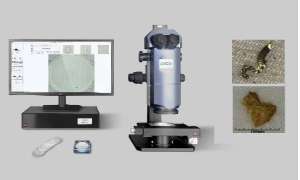Use of cleanliness tester
Cleanliness tester has a wide range of uses, its core is to assess the degree of contamination of the surface of the object to ensure product reliability, safety and compliance. The following are its main application areas and specific scenarios:
1.manufacturing quality control
Precision parts machining
Detect the cutting fluid and metal chip residue after machining of mechanical parts (such as bearings and gears) to avoid scratches or wear during assembly.
Standard reference: ISO 16232 (particle cleanliness), VDA 19 (Automotive parts cleanliness)。
Electronic component production
Test wafers, PCB surface particles, ions or organic residues to prevent short circuits or signal interference.
Key indicators: IPC-A-610 (Electronic Assembly Acceptance Standard)。
Medical equipment manufacturing
Verify the cleaning effect of endoscopes and surgical instruments, and control microbial or protein residues.
Compliance requirements: ISO 15883 (cleaning effect verification), GB/T 14233.1 (microbial contamination)。
2. the automobile industry
Engine critical component
Detect particle contamination of fuel systems, fuel injectors and other components to prevent clogging or wear.
Typical application: Meets ISO 4406 hydraulic oil cleanliness rating (e.g. 18/15/12)。
New energy battery
Analyze dust or electrolyte residue on the surface of the lithium battery electrode to improve battery safety and life.
3.Environment and monitoring
Clean room verification
Monitor particle concentrations in the air of dust-free workshops (such as ISO 14644) to ensure compliance with semiconductor and pharmaceutical production environments.
Pollution event analysis
Assess surface contamination (e.g. oil, chemical residue) following an industrial spill or accident to aid environmental remediation decisions.
4. Research and development and fault analysis
Material compatibility test
Analyze the pollutant precipitation of new materials in a specific environment (such as medical polymer materials)。
Failure component diagnosis
Detect the contaminant content of faulty equipment (such as aero engine blades) and trace the cause of failure.
5. Other industries
Food processing: detection of microbial or chemical residues on production line equipment to ensure food safety (e.g. HACCP system)。
Cultural relics protection: Analyze dust and corrosive substances on the surface of cultural relics, and guide restoration programs.
Aerospace: Verification of molecular cleanliness of satellite components to avoid failure of space environment sensitive components.
Core value
Risk prevention: Detect contamination hazards in advance to avoid product recalls or safety incidents.
Optimize the process: Adjust the cleaning process (e.g. ultrasonic time, solvent type) with cleanliness data.
Compliance assurance: Meet industry certification or regulatory requirements (e.g. FDA, ISO 13485)。
By quantifying pollution data, the cleanliness tester provides a scientific basis for quality control and is widely used in the whole life cycle from research and development to after-sales maintenance.


